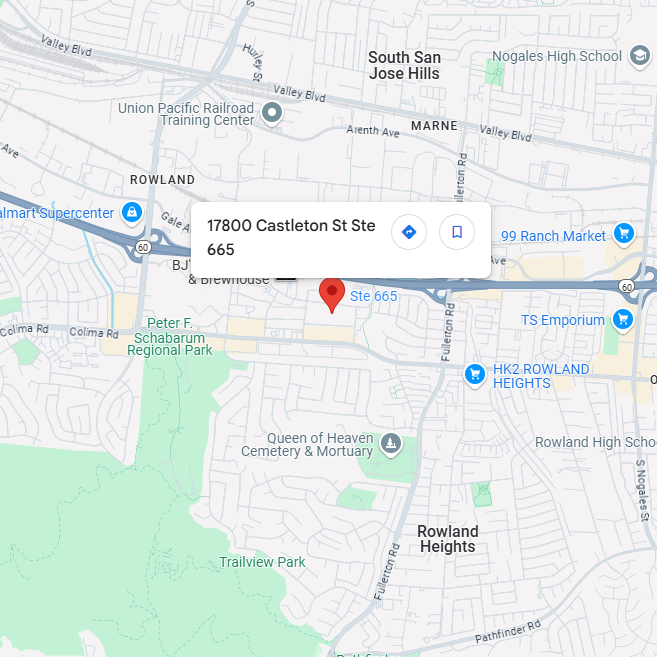EDITGENE CO., LTD

17800 Castleton St. Ste 665. City of Industry. CA 91748

info@editxor.com

+1-833-226-3234 (USA Toll-free)
+1-224-345-1927 (USA)
+86-19120102676 (Intl)

Technical Support

Support Center
Beijing Time: Monday to Friday, 8:00 AM - 6:00 PM
Toll-Free (USA): +833-226-3234
Direct Line (USA): +1-224-345-1927
Email: techsupport@editxor.com

After-Hours Support
Beijing Time: Monday to Sunday, 8:00AM - 6:00 PM
International Line: +86-19120102676
Email: info@editxor.com

Facebook Messenger
Reach out to us on Facebook Messenger for personalized assistance and detailed information.

Linkedin
Engage with us on LinkedIn for professional inquiries, the latest blogs, discoveries, and updates on our innovative work.
FAQ
How to choose the appropriate gene delivery method?
Selecting a suitable gene delivery system requires a comprehensive assessment based on specific experimental conditions, research objectives, and cell types. Quantitatively comparing various systems in terms of delivery efficiency, cytotoxicity, and stability is an important step in determining the choice.
Viral delivery systems are suitable for experiments that require high delivery efficiency and sustained gene expression, especially when cells can tolerate higher levels of cytotoxicity and immune responses. If lower cytotoxicity and immune response, along with ease of use and cost-effectiveness, are priorities, then a liposome-based gene delivery system should be chosen. For high delivery efficiency that involves delivering large DNA fragments, and if the user can accept a higher operational complexity, a gene gun delivery system is an optional method. If high delivery efficiency is needed while maintaining relative simplicity and no special equipment is required, then the electroporation delivery system may be a suitable choice.
Viral delivery systems are suitable for experiments that require high delivery efficiency and sustained gene expression, especially when cells can tolerate higher levels of cytotoxicity and immune responses. If lower cytotoxicity and immune response, along with ease of use and cost-effectiveness, are priorities, then a liposome-based gene delivery system should be chosen. For high delivery efficiency that involves delivering large DNA fragments, and if the user can accept a higher operational complexity, a gene gun delivery system is an optional method. If high delivery efficiency is needed while maintaining relative simplicity and no special equipment is required, then the electroporation delivery system may be a suitable choice.
How to choose the appropriate vector type?
When selecting a vector, consider the purpose of the experiment and the type of host cells. For example, plasmid vectors are commonly used for gene expression or amplification in bacteria, while viral vectors are more suitable for gene transfer in mammalian cells. Additionally, the vector's promoter, replicon, and antibiotic selection markers should be chosen based on specific requirements.
What host bacteria are used for vector construction in EDITGENE? What type of strains can customers use to amplify plasmid vectors?
During vector amplification, Escherichia coli (E. coli) strains are typically used. The commonly used strain for most non-recombinant vectors is DH5α, which is suitable for most applications. For recombinant vectors, such as lentiviral vectors and transposon vectors, the Stbl3 strain can be used for amplification. Stbl3 is a specialized E. coli strain derived from HB101, which has a mutation in the recombinase gene recA13, effectively suppressing recombination of long fragment terminal repeat regions and reducing the likelihood of erroneous recombination.
How to choose the appropriate vector type?
When selecting a vector, consider the purpose of the experiment and the type of host cells. For example, plasmid vectors are commonly used for gene expression or amplification in bacteria, while viral vectors are more suitable for gene transfer in mammalian cells. Additionally, the vector's promoter, replicon, and antibiotic selection markers should be chosen based on specific requirements.
What host bacteria are used for vector construction in EDITGENE? What type of strains can customers use to amplify plasmid vectors?
During vector amplification, Escherichia coli (E. coli) strains are typically used. The commonly used strain for most non-recombinant vectors is DH5α, which is suitable for most applications. For recombinant vectors, such as lentiviral vectors and transposon vectors, the Stbl3 strain can be used for amplification. Stbl3 is a specialized E. coli strain derived from HB101, which has a mutation in the recombinase gene recA13, effectively suppressing recombination of long fragment terminal repeat regions and reducing the likelihood of erroneous recombination.
What host bacteria are used for vector construction in EDITGENE? What type of strains can customers use to amplify plasmid vectors?
During vector amplification, Escherichia coli (E. coli) strains are typically used. The commonly used strain for most non-recombinant vectors is DH5α, which is suitable for most applications. For recombinant vectors, such as lentiviral vectors and transposon vectors, the Stbl3 strain can be used for amplification. Stbl3 is a specialized E. coli strain derived from HB101, which has a mutation in the recombinase gene recA13, effectively suppressing recombination of long fragment terminal repeat regions and reducing the likelihood of erroneous recombination.
What host bacteria are used for vector construction in EDITGENE? What type of strains can customers use to amplify plasmid vectors?
During vector amplification, Escherichia coli (E. coli) strains are typically used. The commonly used strain for most non-recombinant vectors is DH5α, which is suitable for most applications. For recombinant vectors, such as lentiviral vectors and transposon vectors, the Stbl3 strain can be used for amplification. Stbl3 is a specialized E. coli strain derived from HB101, which has a mutation in the recombinase gene recA13, effectively suppressing recombination of long fragment terminal repeat regions and reducing the likelihood of erroneous recombination.
Why choose lentivirus as a gene delivery tool?
Lentiviruses have high transduction efficiency and the ability to maintain stable gene expression over the long term, making them particularly suitable for cell types that are difficult to transfect. Furthermore, lentiviruses can integrate exogenous genes into the host genome, ensuring prolonged gene expression.
After lentiviral transduction, the cell condition is poor, and there is significant cell death. How can this be addressed?
4.Poor cell condition after lentiviral infection may be caused by various factors. Here are some possible reasons and corresponding solutions:
1.High viral titer: High titers of lentivirus may cause cytotoxicity, preventing normal cell growth. Solution: Lower the viral titer and conduct a series of dilution experiments to find a titer that effectively transduces without adversely affecting cell growth.
2.Poor cell condition: The health status of cells before infection can affect growth after infection. Solution: Ensure cells are in optimal condition for infection, for example, by changing to fresh culture medium 24 hours before infection and ensuring appropriate cell density.
3.Toxicity of gene expression mediated by the virus: The gene carried by the lentiviral vector may be toxic to the cells, affecting their growth. Solution: If possible, use a control vector to determine if the problem is related to gene expression, and select appropriate vectors or genes for research.
4.Excessive antibiotic selection pressure: If antibiotics are used to select transfected cells, excessive concentrations of antibiotics may inhibit cell growth. Solution: Optimize the antibiotic concentration and use gradient experiments to determine the optimal concentration.
How is Prime Editing 7 (PE7) different from traditional CRISPR/Cas9 technology?
Traditional CRISPR/Cas9 technology achieves gene editing by introducing double-strand breaks at the target DNA site and then using the cell’s homologous recombination repair mechanism. This approach carries multiple risks, such as lower editing efficiency, reduced homozygous mutation rates, and random insertions or deletions. Prime Editing, however, does not require double-strand breaks. With its Cas9n-RT editing enzyme system and pegRNA, Prime Editing achieves more accurate and safer gene editing with reduced off-target effects.
Why choose EDITGENE’s point mutation services?
EDITGENE’s newly upgraded seventh-generation Bingo™ Prime Editing (PE7) platform optimizes editing protein and RNA editing activity. Compared to the fifth-generation PE technology, point mutation success rates and gene editing efficiency have significantly improved, with one-on-one support from PhDs from globally renowned institutions.
How does EDITGENE’s Bingo™ Prime Editing 7 (PE7) platform ensure point mutation success rates?
EDITGENE’s Bingo™ Prime Editing 7 (PE7) platform is built upon over ten years of gene editing experience, with optimization and advancements derived from thousands of gene editing CRO projects, achieving significantly higher success rates than traditional site-specific mutation systems. The Bingo™ Prime platform utilizes highly efficient reverse transcriptase and precise guide RNA design, ensuring each point mutation reaches the desired outcome.
What is Prime Editing?
Prime Editing is a novel gene editing technology that enables precise gene editing without introducing double-strand DNA breaks. It has two core components: pegRNA and the PEmax gene-editing enzyme (Cas9n-RT). PegRNA not only targets the desired sequence but also contains the base modification information. In the editing system, pegRNA guides PEmax to the designated edit site, nicks the DNA single strand, and reverse transcribes the sequence within the pegRNA to modify, inserting it into the target genome location, thereby achieving precise single-base substitutions or small insertions and deletions
Are KO cell lines applicable to all cell types?
KO cell lines can be applied to various cell types, including cancer cells, stem cells, and primary cells, but different cell types may have varying sensitivities to gene editing, and may vary among different cell types. In certain cell types, achieving gene knockout may require optimization of transfection conditions and selection of appropriate gene-editing tools.
What is a KO cell line?
KO (Knockout) cell line is a cell line where a specific gene has been completely removed or rendered non-functional through gene editing technologies such as CRISPR-Cas9. These cell lines are critical for understanding gene functions and disease mechanisms.





 Room 501, Building D, International Business Incubator, No.3 Juquan Road, Science City, Huangpu District, Guangzhou, Guangdong, China 510663
Room 501, Building D, International Business Incubator, No.3 Juquan Road, Science City, Huangpu District, Guangzhou, Guangdong, China 510663
